Frida Kahlo is one of the most iconic artists of the 20th century.
Born near Mexico City in 1907, her life was plagued by illness and tragedy.
She contracted polio as a young child, and, at the age of eighteen, sustained crippling injuries during a horrific traffic accident.
The bus she was travelling on collided with a tram, leaving her with a fractured spine, a crushed pelvis, and a broken foot.
It was a miracle she survived. During the impact, one of the dislodged handrails cut through her left hip and pierced through her vagina.
Over the coming years, Frida withstood dozens of operations, and had to wear rigid corsets and metallic braces.
But, left bedridden for months, she taught herself how to paint - which transformed her.
At the age of twenty-two, Frida married the acclaimed painter, Diego Rivera, who was twenty years her senior.
Despite their shared passion for art and politics (they were both Communists), their relationship was tempestuous.
He was notoriously promiscuous, and had a steady stream of lovers - including Frida’s younger sister, Cristina.
Frida also had affairs with both women and men (e.g. the Russian exile Leon Trotsky), and she and Diego divorced in 1939 - only to remarry a year later.
Rather than using art to escape reality, Frida uninhibitedly chronicled her life through her artworks.
Her whole oeuvre is intensely autobiographic. She created dozens of self-portraits, and, in one form or another, appears in most of her paintings.
Having initially been overshadowed by her husband’s celebrity and success, dealers and collectors finally started to take an interest in Frida’s paintings during the late-1930s and early-1940s.
At the time, she was viewed as a Surrealist, but, later in life, rejected this idea: “They thought I was a Surrealist, but I wasn’t. I never painted dreams. I painted my own reality”.
Some of Frida’s most powerful artworks celebrate her mixed heritage (her mother was Mexican, and her father was brought up in Germany but his parents were Hungarian Jews).
Other paintings focus on the physical and emotional hardships that Frida suffered.
She completed My Birth (1932) soon after losing both her mother and an unborn child (the pregnancy had to be terminated due to complications).
And her harrowing self-portrait The Broken Column (1944) communicates so much about the excruciating pain she endured.
One of Frida’s other most arresting paintings is The Little Deer (1946).
The sharp arrows and bleeding wounds mimic those in iconic images of Christian martyrs such as St Sebastian.
But, rather than grimacing in pain, the deer’s facial expression is strangely static and serene.
Did she want to portray herself as a survivor - as having transcended pain/tragedy? Or is the face just a façade - a depiction of the stoic mask she lived behind?
Frida was such a complex personality.
Ferociously independent and defiant, she had an extraordinary vitality, and was highly charismatic.
But she also suffered from bouts of depression, debilitating fears of abandonment, intense jealousies, and, at times, could be controlling and manipulative.
One of the most fascinating aspects of Frida’s personality was her theatricality.
At a time when all things ‘modern’ were the rage, she often wore traditional Mexican clothes such as hand-embroidered blouses, long red skirts with white ruffles, jade necklaces, and a rich assortment of bracelets and rings.
She looked so eye-catching that children used to follow her down the street - shouting out to ask when the circus was coming.
Partly through her marriage to such a famously histrionic artist, Frida’s life became a sort of spectacle.
One of the most poignant examples of this played out just over a year before her death.
It was the opening night of her first solo exhibition in Mexico City.
At the time, she was so ill and physically incapacitated that no-one expected her to attend; but, driven in an ambulance and dramatically carried into the gallery on a stretcher, she was placed on an elaborately decorated bed that had been especially prepared for her.
The barriers between life and art suddenly dissolved, and she became a living artwork in her own exhibition.
Tragically, by the end of that summer, Frida’s right leg was dangerously gangrenous and had to be amputated beneath the knee.
This final humiliation pushed her over the edge.
Having become addicted to the painkillers she was prescribed, Frida died on 13th July 1954 aged just forty-seven.
If you would like to learn more about Frida Kahlo’s life then read Hayden Herrera’s biography Frida: The Life of Frida Kahlo.
The biopic Frida (2002) is brilliant too.







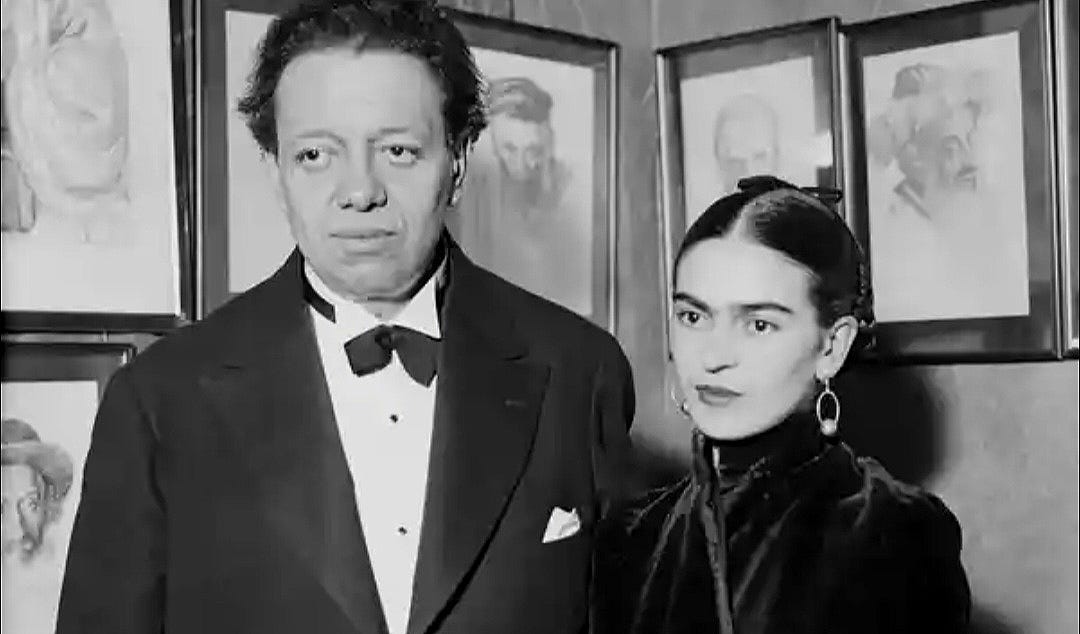



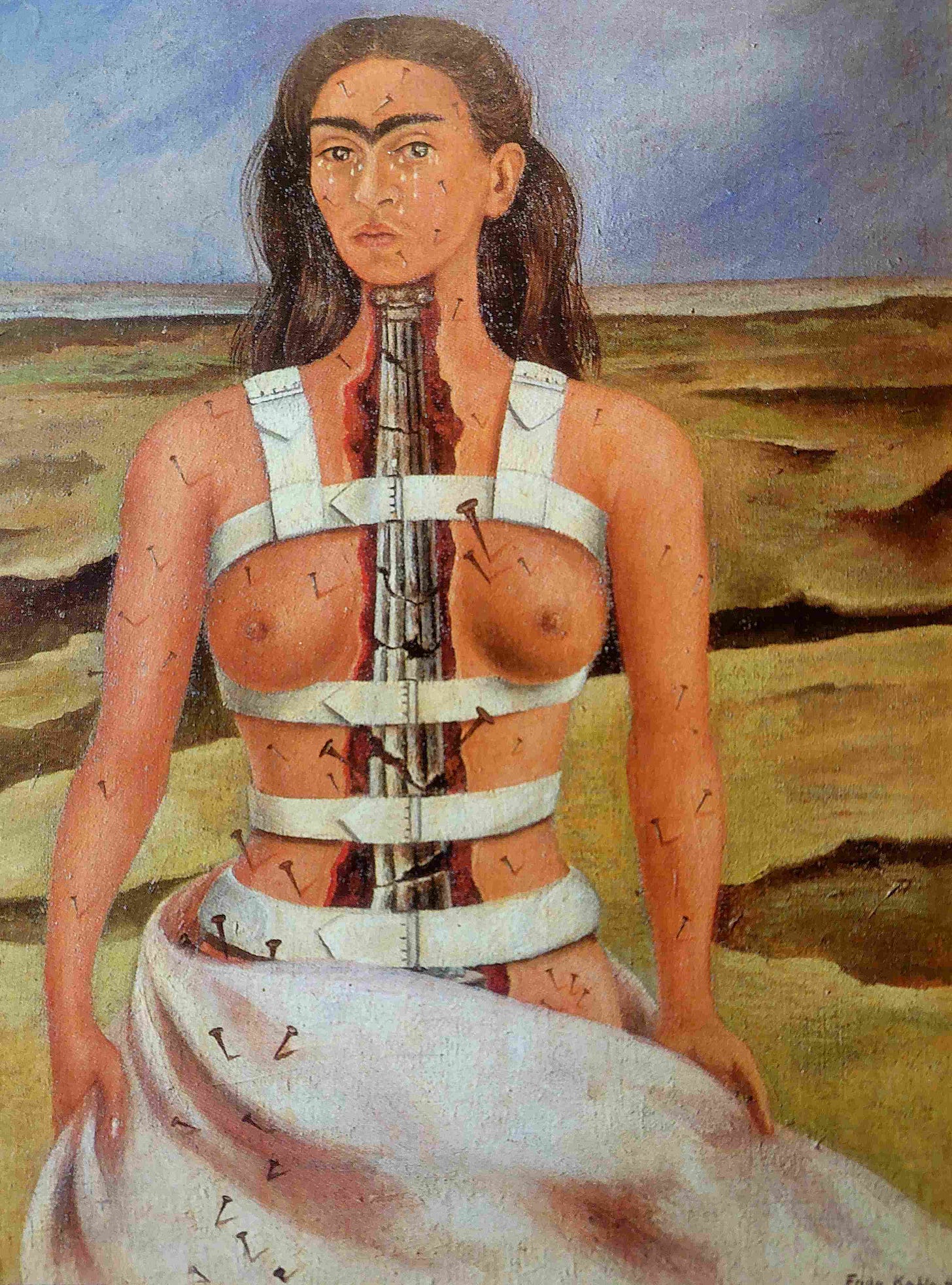
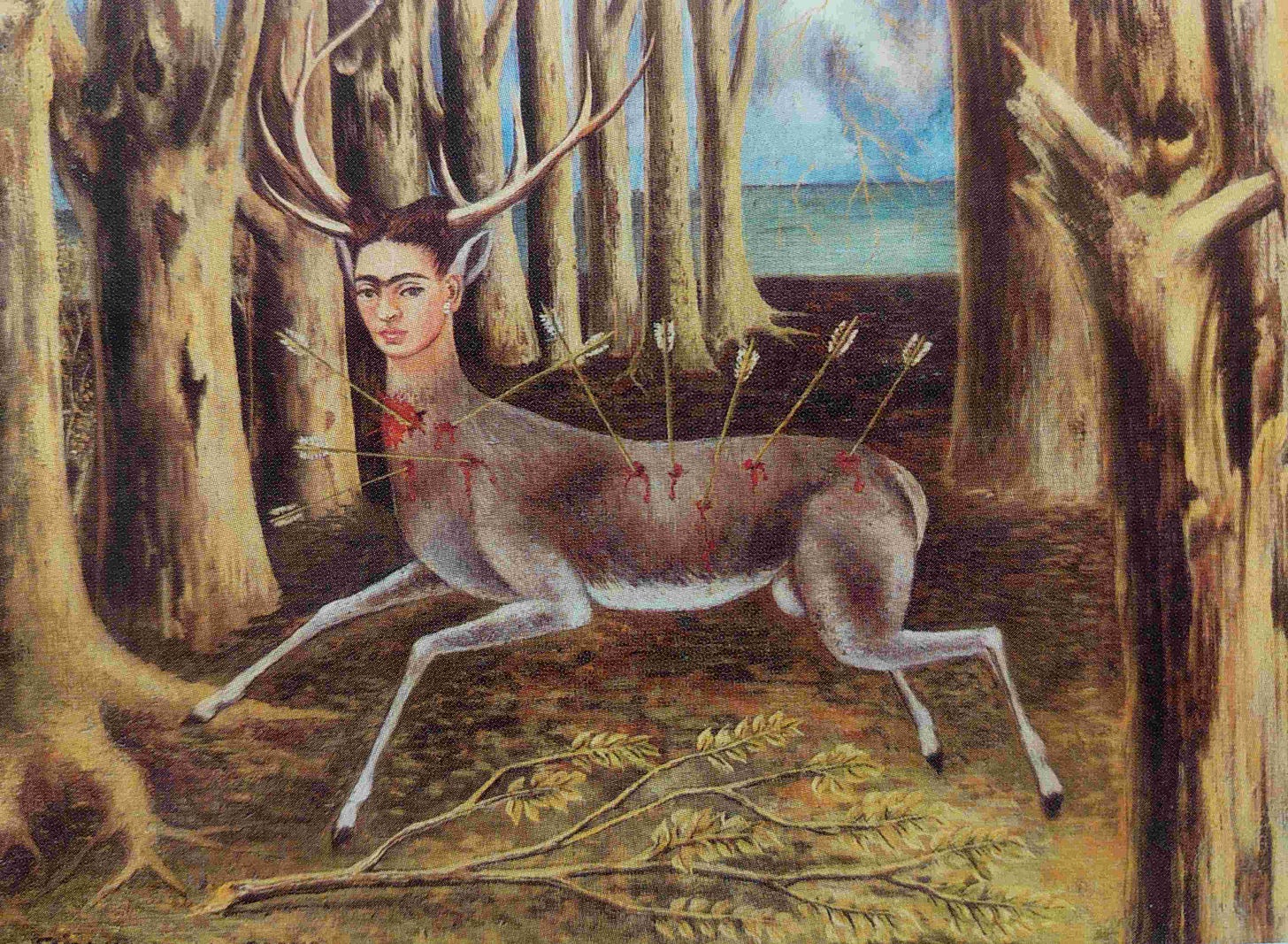

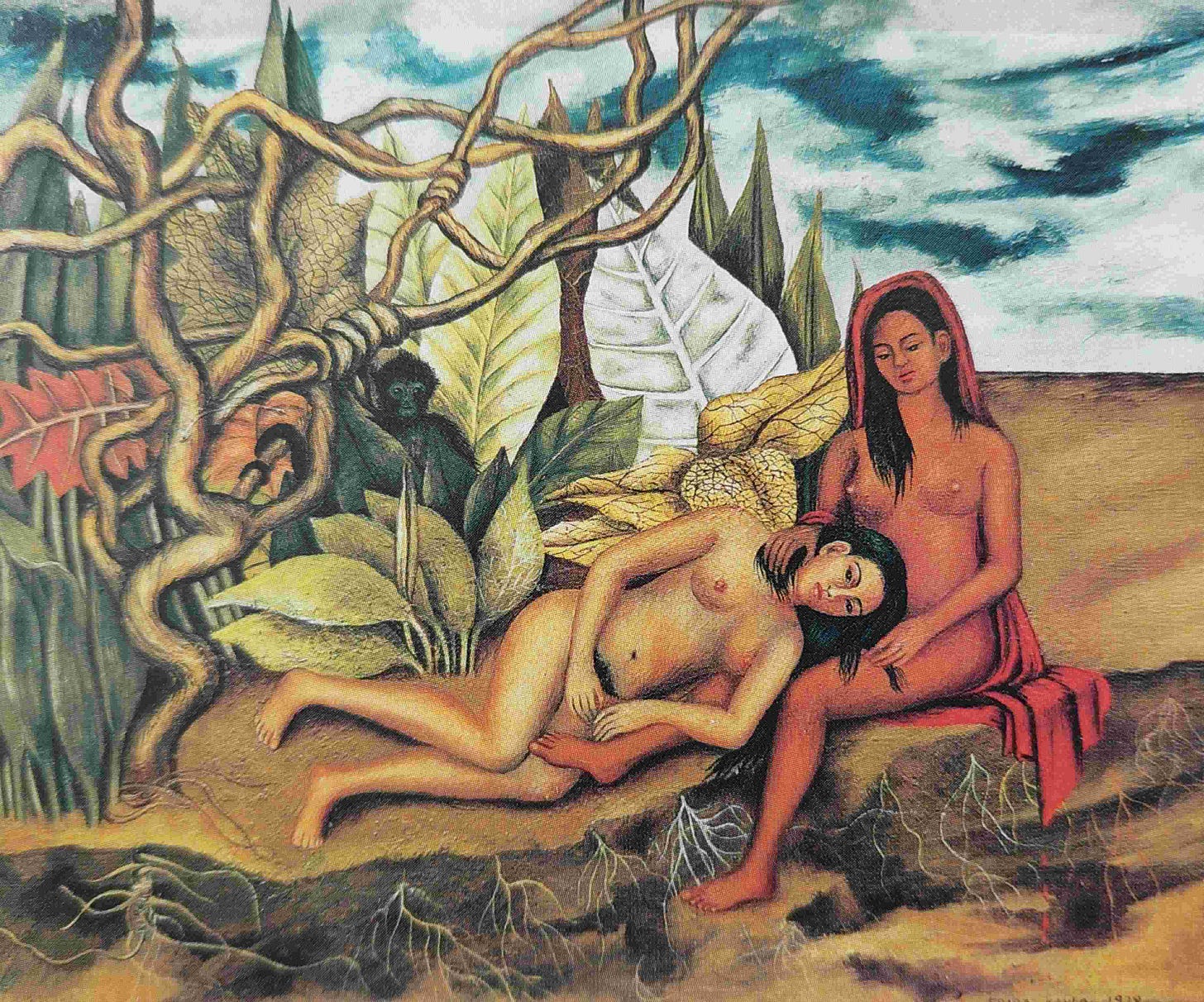
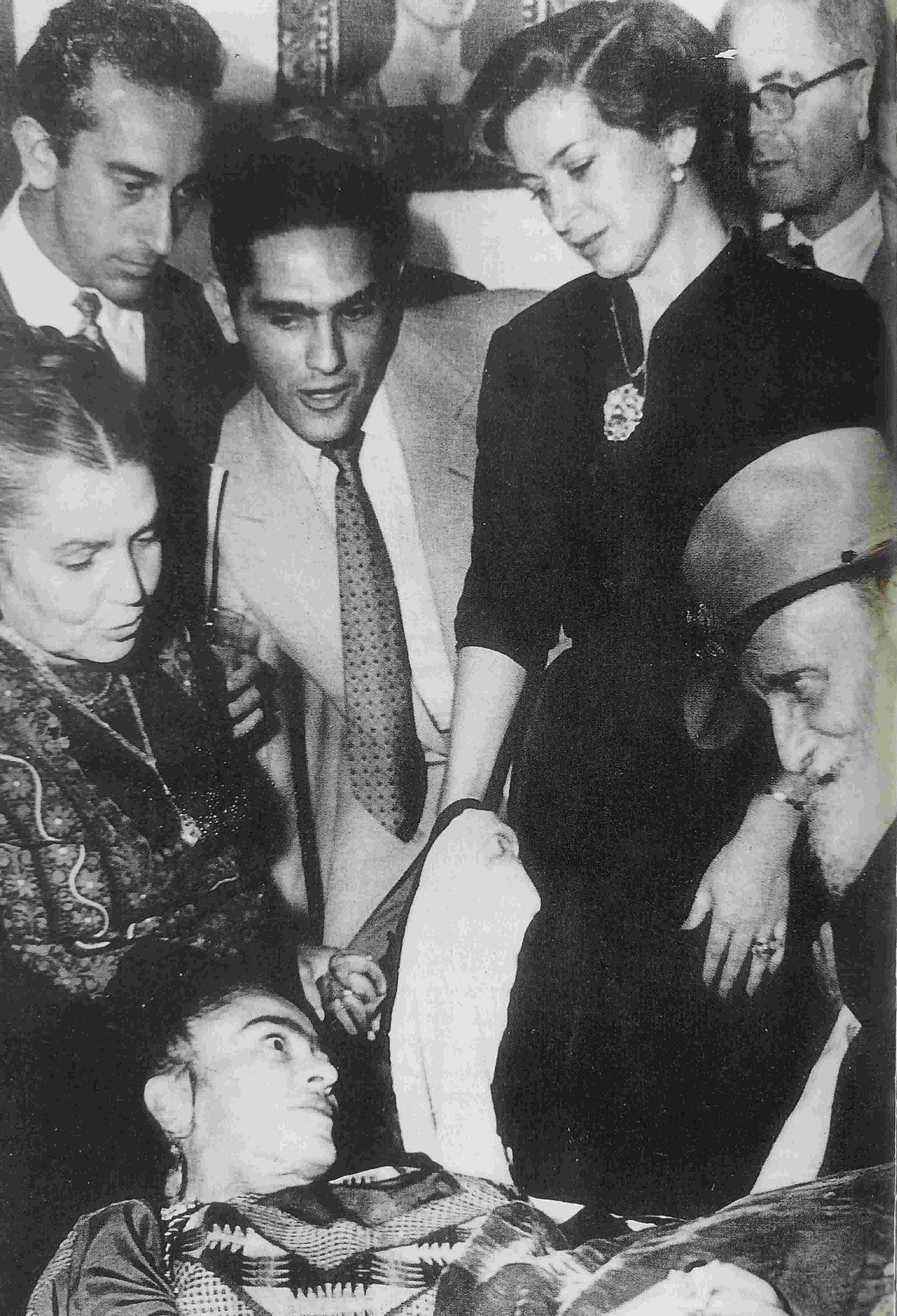
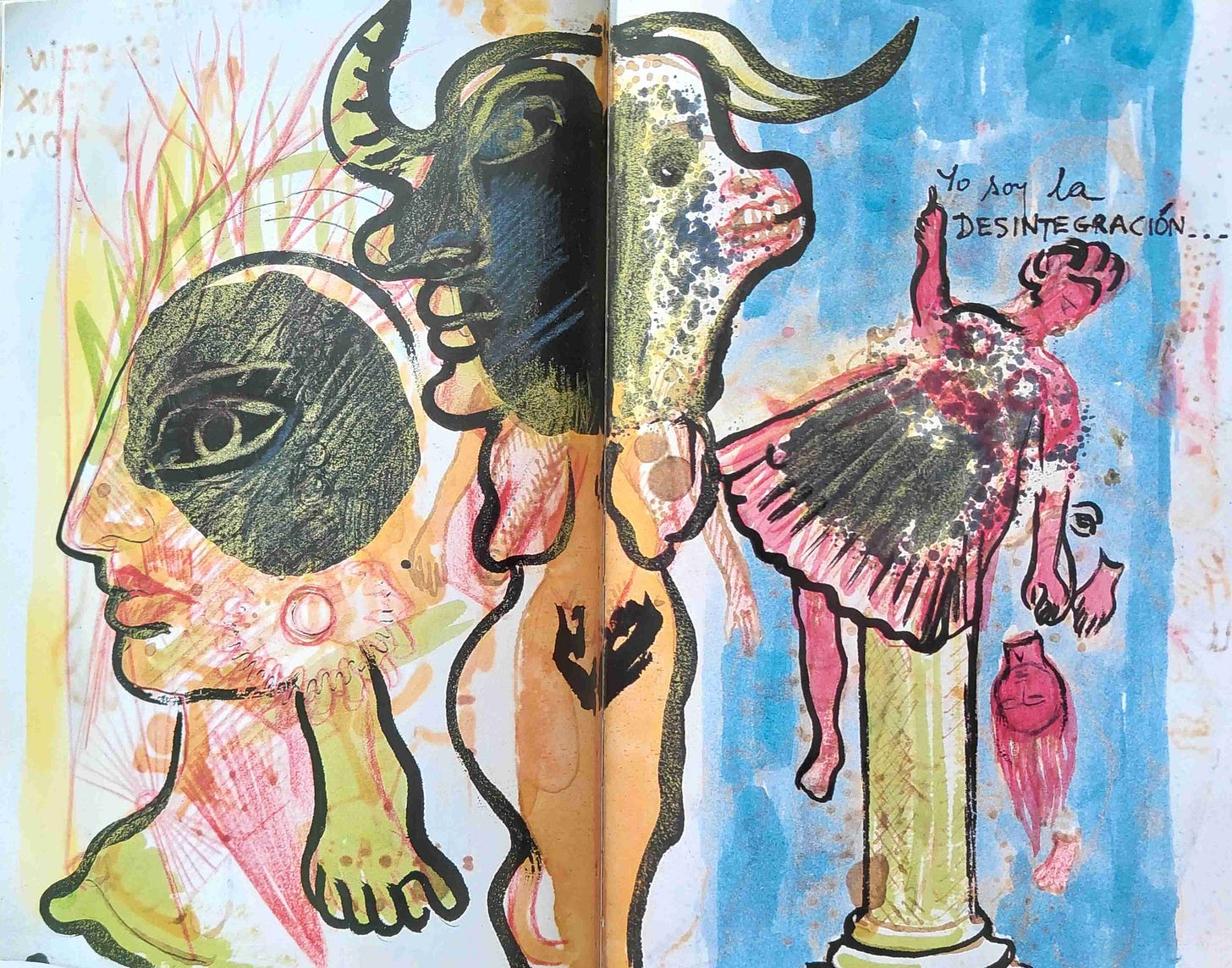
A fine introduction to her art and life. My visit to Casa Azul, the house she shared with Diego, was the highlight of my trip tp to Mexico City. You are immersed in Frida—her art, her clothes, her love of indigenous culture, her pain. Above her bed is a mirror to help her paint lying down.
Thank you, James. What a brave, brilliant woman she was. Like her country, she suffered so much but still dazzled the world.